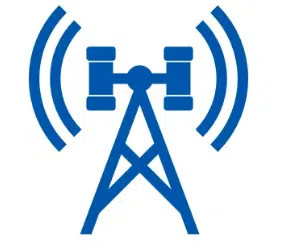Cell towers play a crucial role in the development and implementation of smart city initiatives. Smart cities aim to leverage technology and data to improve efficiency, sustainability, and the quality of life for residents. Cell towers, as part of the telecommunications infrastructure, enable the connectivity and data transmission required for various smart city applications. Here’s how cell towers contribute to smart city initiatives:
- Connectivity Backbone: Cell towers serve as a fundamental component of the telecommunications network, providing the connectivity necessary for smart city systems to function. They enable wireless communication between devices, sensors, and data centers, facilitating real-time data exchange.
- IoT (Internet of Things) Connectivity: Smart city initiatives often involve the deployment of IoT devices, such as sensors, cameras, and meters, to collect data and monitor various aspects of urban life. Cell towers support the connectivity of these IoT devices, allowing them to transmit data for analysis and decision-making.
- 5G Deployment: The rollout of 5G technology, with its increased speed and capacity, is a key enabler of smart city applications. 5G networks require a denser infrastructure of cell towers, including small cells, to deliver high-bandwidth, low-latency connectivity for smart city devices and services.
- Smart Traffic Management: Cell towers support intelligent traffic management systems that rely on real-time data from sensors, cameras, and connected vehicles. These systems can optimize traffic flow, reduce congestion, and enhance road safety.
- Public Safety: Cell towers enable public safety networks and emergency response systems, providing critical communication channels for first responders during emergencies and natural disasters. These networks enhance the city’s preparedness and ability to respond to crises.
- Environmental Monitoring: Smart city initiatives often include environmental monitoring to measure air quality, pollution levels, and weather conditions. Data from sensors deployed throughout the city can be transmitted via cell towers to inform environmental policies and improve public health.
- Energy Management: Cell towers support the deployment of smart grid technology, allowing utilities to monitor and manage energy distribution efficiently. This can lead to reduced energy consumption, cost savings, and improved sustainability.
- Urban Planning: The data collected from various smart city applications can inform urban planning decisions. For example, information on traffic patterns, air quality, and energy usage can help city planners make data-driven decisions to create more sustainable and livable urban environments.
- Citizen Engagement: Smart city initiatives often include citizen engagement platforms and mobile apps that allow residents to interact with local government, access services, and provide feedback. Cell towers ensure that residents can access these services on their mobile devices.
- Data Analytics: The data transmitted through cell towers is collected and analyzed to derive insights that drive smart city improvements. This data-driven decision-making helps optimize city services and infrastructure.
Overall, cell towers serve as a critical infrastructure component that enables the connectivity, data transmission, and communication needed for the successful implementation of smart city initiatives. As cities continue to evolve and embrace smart technologies, the role of cell towers in supporting these initiatives will become increasingly essential.
